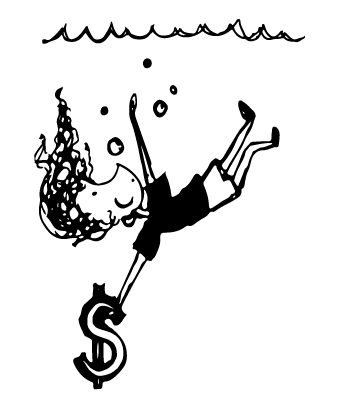Income differences should be top of mind as September approaches

Photo via Unsplash.
The back-to-school season is an exciting time for many university students. Reconnecting with friends after the summer, taking new classes, maybe even moving into a new apartment. The start of a new school year offers much to look forward to.
For me, there’s a certain bitterness to this naivety. While the bustle of a new school year can be fun to romanticize, for students who face economic burdens, it often brings more stress than excitement. Rising tuition costs, finding a place to live amidst the housing crisis, and keeping up with the grocery prices all lead to stress.
Plenty of commonly accepted research on financial inequality in higher education focuses on the relationship between one’s economic status and their likelihood to enroll into a post-secondary institution. For example, it was once the case that those from poorer backgrounds would not apply to post-secondary school, and instead enter the workforce right out of high school. Recently though, research finds that the effect of economic status on enrollment in Canadian post-secondary institutions has been progressively decreasing.
Despite the fact that new students’ financial situations still affect certain aspects of enrollment — such as in the kinds of programs that they tend to register for — being economically disadvantaged no longer affects the rate at which university students enroll in university.
Economic inequality in higher education is not merely an issue of enrollment inequality. The bigger issue at stake is students’ ability to afford higher education after enrollment.
This issue begins with the most obvious of students’ costs: tuition. According to a study by Statista, Canadian undergraduate tuition averages reached an all-time high in 2023 at $7 076, a 2.97 ($204) per cent increase from the previous year. What makes this increase in tuition scarier is that, at the same time, government funding is shrinking.
Ontario and Alberta have sharply limited their provincial student funding schemes in recent years. In Ontario, for example, because of Doug Ford’s change to the Ontario Student Assistant Program, students from Ontario no longer have access to free tuition for low-income families, are met with more loans than grants, and must meet a higher threshold of family income to receiving any assistance to begin with.

Illustration by Sage Blackwell.
These trends, amidst already abysmal economic conditions in the country, have serious, real-life effects on students.
The Fostering Learning and Awareness on Student Housing survey that focuses on Canadian student housing experiences found that students across the country pay 25 per cent more than non-students to rent. Additionally, the survey found that 70 per cent of students spent over 30 per cent of their income just on rent.
In Victoria, students can expect to pay between $900 and $2 000 per month for their accommodation in off-campus housing, which most students must do after their first year, when dormitory housing becomes harder to secure. Students who are accepted to live in on-campus residences can anticipate paying between $9 060 and $15 298 for a September to April rent term, or approximately $1 132 to $1 912 per month.
To make things worse, students living on Vancouver Island can also expect to pay more for groceries than those living on the mainland.
To deal with these obstacles, many students work multiple jobs, take out external loans, or put their education on the back burner.
As a first-generation university student from a working class family, this is my reality. Working multiple jobs, experiencing pressure to do well in classes, maintaining a social life, and building your resumé can have many negative effects on a student’s mental and physical well-being. Attending university is supposed to be one of the highlights of your life, but it can be difficult to frame it that way when you can barely afford to live.
I know that many UVic students can relate to me.
Don’t get me wrong: this isn’t to say that students shouldn’t relish the new school year. To say so would overlook the fact that many have worked extraordinarily hard to overcome inequalities just to attend university in the first place. And, regardless of the inequalities that students encounter, finding joy in friends and classes is a necessary part of survival.
This is to say that we should all be aware of the ongoing education inequalities that exist in higher education in Canada, and how these inequalities are being addressed by our governments and schools. Back-to-school season is exciting — it just happens to depend heavily on who you are, and what resources you have at your disposal. All students deserve better conditions, going into this academic year and every one after.








